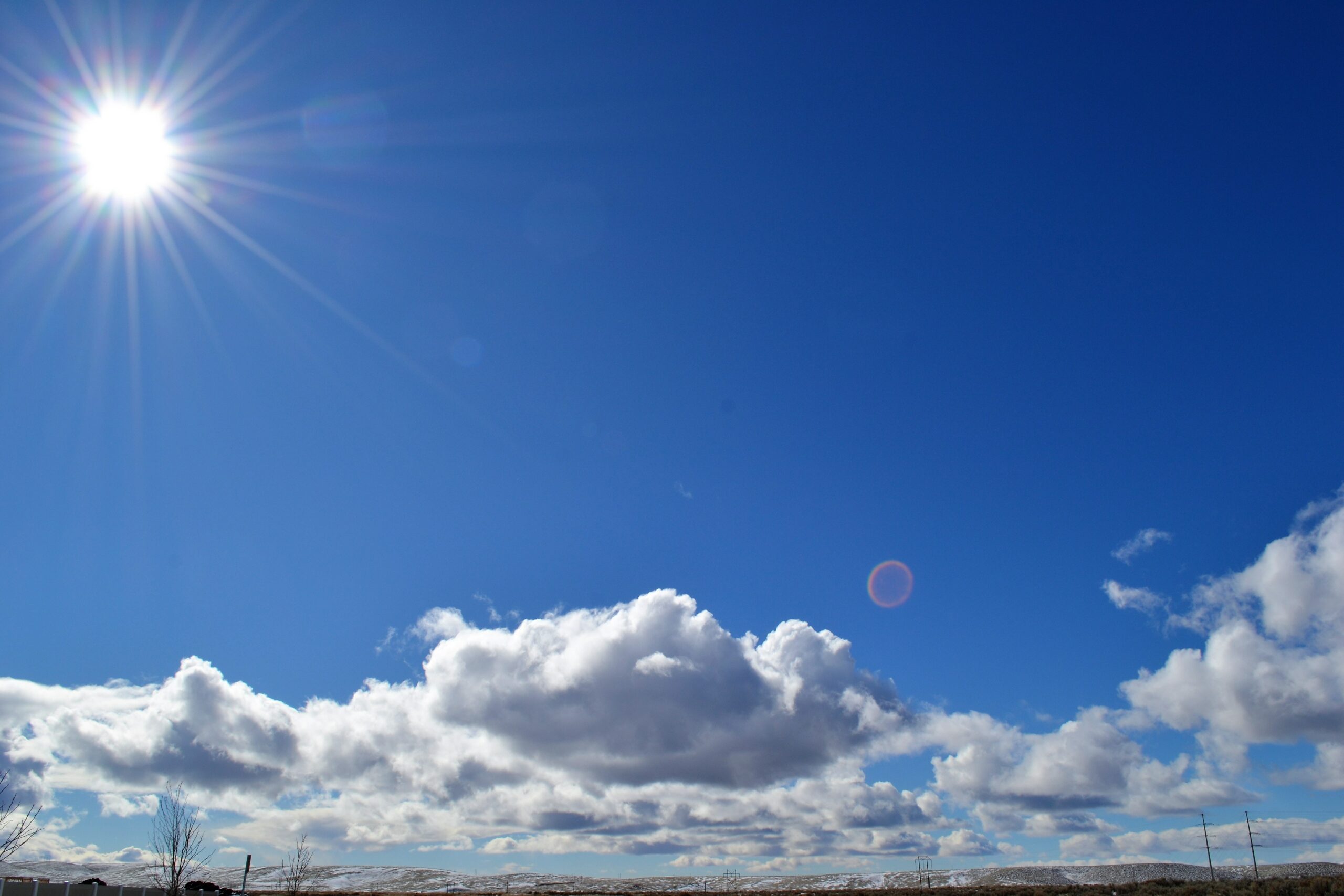Top takeaways:
- Climate scientists use climate models to mathematically represent the Earth’s climate system at different spatial and temporal scales. These models are used to project scenarios of possible future climates.
- Representative Concentration Pathways (RCPs) are GHG emission scenarios that project future temperatures based on different atmospheric carbon concentrations. Shared Socio-Economic Pathways (SSPs) are scenarios that look at the influence of social and economic factors on GHG emissions. Both are used in future climate change modelling and assessments.
- Businesses should review climate change scenarios as part of their risk assessment process to identify potential risks to their operations and supply chains. Consider regional projections, such as the TRCA’s, to better assess possible local impacts.
Understanding climate change impacts at the local level requires analyzing data at the right spatial resolution. Typically, climate models consider global climate dynamics and make projections on relatively large spatial scales, dividing the surface of the earth up into large grids(e.g. 100km by 100km) and averaging climate variables over that entire area[1]. At such large spatial scales, the influence of local geographic features (e.g., small lake or change in topography) can be missed, presenting data that may not be directly useful to stakeholders interested in climate change impacts for their location. Global Climate Model (GCM) outputs may also contain regional biases relative to observational data that limit their usefulness for local impact studies[2], [3]. While each GCM has the same purpose, the models differ in their particular specifications and formats because each modelling group of researchers apply their own scientific judgements related to climate[3].
To get a better sense of climate change impacts at smaller spatial scales, climate model downscaling is required. Downscaling refers to the quantitative techniques that are used to increase the spatial resolution of climate model data and “zoom in” on smaller areas[3]. Through downscaling, regional biases from global climate models can be adjusted and outputs can better represent regional climate processes and dynamics.
In 2021, Toronto and Region Conservation Authority’s (TRCA) Ecosystem and Climate Science team used available downscaled, regional climate model (RCM) data to develop local climate projections for TRCA’s jurisdiction at a spatial resolution of about 25km by 25km.
The projections were made under a moderate GHG emissions scenario (RCP4.5) and a high emissions scenario (RCP8.5) as the IPCC’s latest SSP emissions scenarios were not available at the time. Please see below for an explanation of the RCPs.
The use of two climate change scenarios helps to illustrate more than one possible future. However, it is important to note that TRCA projections under the moderate emissions scenario (RCP4.5) are based on three model runs (or three GCM-RCM combinations), whereas the projections under the high emissions scenario (RCP8.5) are based on 16 model runs as more research has traditionally focused on the high emissions scenario. Since fewer model runs were used for the moderate emissions scenario, the RCP4.5 projections should be considered with greater uncertainty. The projections were made to the end of the century and have been summarized for the short, medium, and long-term future: the 2020s (2011-2040), the 2050s (2041-2070), and the 2080s (2071-2100). A full summary table of TRCA climate change projections can be found here.
Understanding Climate Change Scenarios
Representative Concentration Pathways (RCPs)
With the IPCC’s Fifth Assessment Report (AR5), four GHG emission scenarios called Representative Concentration Pathways (RCPs) were developed: RCP8.5, RCP6, RCP4.5, and RCP2.6. As the name implies, the focus of RCPs is on concentrations of GHGs in the atmosphere, with the number for each RCP indicating the radiative forcing values in the year 2100 in Watts/m2. By the year 2100, the projected CO2 equivalent concentration is above 1200 ppm, whereas it is closer to 419 ppm as of December 2022 [4]. These scenarios show potential pathways to these higher atmospheric emissions concentrations. RCPs commonly used in climate change analysis include RCP4.5, which represents a moderate or intermediate emission scenario, and RCP8.5, which represents high or worst-case emission scenario. The RCPs do not include their own accompanying socio-economic narratives.
For more information on the RCPs check out this article on Skeptical Science and overview on the Government of Canada webpage.
Shared Socio-Economic Pathways (SSPs)
Another important input for climate models in the IPCC’s Sixth Assessment Report (AR6) are Shared Socio-Economic Pathways (SSPs), which look at possible future scenarios under the influence of different social and economic factors and how they could potentially lead to more or less GHG emissions. This includes considering the impacts that changes in population, demographics, economic growth, education, urbanization, development, could have on emissions. The narratives for the five SSPs include:
SSP1 – Sustainability – Taking the Green Road (Low challenges to mitigation and adaptation)
SSP2 – Middle of the Road (Medium challenges to mitigation and adaptation)
SSP3 – Regional Rivalry – A Rocky Road (High challenges to mitigation and adaptation)
SSP4 – Inequality – A Road Divided (Low challenges to mitigation, high challenges to adaptation)
SSP5 – Fossil-fueled Development – Taking the Highway (High challenges to mitigation, low challenges to adaptation)
For more background on the SSPs check out this great explainer article by Carbon Brief [5] and the overview article by Riahi et al., 2017[6].
A 2020 article by the Woods Hole Research Center considered the high emissions scenario, RCP8.5, a useful scenario for conducting climate change impact assessments on shorter time horizons (e.g., mid-century or earlier) as it agrees most closely with historical data from the past few decades compared to other scenarios[7]. The high emissions scenario also fits well with current and stated 2050 policies and has highly plausible levels of CO2 emissions by the end of the century [7].
Based on these considerations, and the higher amount of model runs in the TRCA projections mentioned above, more emphasis is placed on the high emissions scenario results in the Building a Climate Resilient Business Resource Kit primers “Changes in Temperature in the Toronto Region over the 21st Century”, “Changes in Precipitation in Toronto Region over the 21st Century” and “Growing Season and Agriculture”.
Bottom Line
Climate scientists use data analysis, mathematical calculations and digital mapping to create models that consider global climate dynamics and make projections on relatively large spatial scales, dividing the surface of the earth up into large grids(e.g. 100km by 100km) and averaging climate variables over that entire area. Through climate model downscaling, regional biases from global climate models can be adjusted and outputs can better represent regional climate processes and dynamics. Using both these macro and micro views of climate change risks, businesses can understand the risks to their facility and along their supply chain to factor into budgeting and strategic planning.
Partners in Project Green’s Building a Climate Resilient Business Resource Kit provides a foundation in the basics of current climate science, the impacts of climate change on businesses, and mitigation and adaptation strategies. Please explore these resources and connect with us to advance your organization’s climate resiliency.
To learn about the impacts of climate change on business, check out:
- Impact: Human Health
- Impact: Buildings and Infrastructure
- Impact: Agriculture and Food Security
- Impact: Supply Chain
- Impact: Financial and Regulatory
[1] McSweeney, R. and Hausfather, Z. 2018. Q&A: How do climate models work? Carbon Brief. Accessed August 30, 2022. URL: https://www.carbonbrief.org/qa-how-do-climate-models-work/
[2] Hausfather, Z. 2018. Explainer: What climate models tell us about future rainfall. Carbon Brief. Accessed August 31, 2022. URL: https://www.carbonbrief.org/explainer-what-climate-models-tell-us-about-future-rainfall/
[3] Cooney, C.M., 2012. Downscaling climate models: sharpening the focus on local-level changes. Environmental Health Perspectives. 120,1. doi: 10.1289/ehp.120-a22
[4] CO2.Earth. Latest Daily CO2. Accessed January 4, 2023. URL: https://www.co2.earth/daily-co2#:~:text=416.58%20ppm&text=This%20table%20presents%20the%20most,Source%20%3D%20NOAA%20GML
[5] Hausfather, Z. 2018. Explainer: How ‘Shared Socioeconomic Pathways’ explore future climate change. Carbon Brief. Accessed September 4, 2022. URL: https://www.carbonbrief.org/explainer-how-shared-socioeconomic-pathways-explore-future-climate-change/
[6] Riahi, K., van Vuuren, D.P., Kriegler, E., Edmonds, J., O’Neill, B.C., Fujimori, S., Bauer, N., Calvin, K., Dellink, R., Fricko, O., Lutz, W., Popp, A., Cuaresma, J.C., KC, S., Leimbach, M., Jiang, L., Kram, T., Rao, S., Emmerling, J., Ebi, K., Hasegawa, T., Havlik, P., Humpenöder, F., Da Silva, L.A., Smith, S., Stehfest, E., Bosetti, V., Eom, J., Gernaat, D., Masui, T., Rogelj, J., Strefler, J., Drouet, L., Krey, V., Luderer, G., Harmsen, M., Takahashi, K., Baumstark, L., Doelman, J.C., Kainuma, M., Klimont, Z., Marangoni, G., Lotze-Campen, H., Obersteiner, M., Tabeau, A., Tavoni, M. 2017. The Shared Socioeconomic Pathways and their energy, land use, and greenhouse gas emissions implications: An overview. Global Environmental Change. Volume 42, Pages 153-168, ISSN 0959-3780, https://doi.org/10.1016/j.gloenvcha.2016.05.009.
[7] Schwalm, C., Glendon, S., and Duffy, P.B. 2020. RCP8.5 tracks cumulative CO2 emissions. Proceedings of the National Academy of Sciences. DOI: 10.1073/pnas.2007117117

